Principles of Non-Financial Decentralized Application Products: How do DApps create maximum value?
Original Title: 《Product Principles for Non-Financial Decentralized Applications》
Author: Ethan Lippman
Compiled by: Heyyawn
The Current State of Decentralized Applications (DApps)
The narrative around Web3 paints a picture of the next generation of the internet based on blockchain. As Chris Dixon from a16z puts it, Web3 is "owned by builders and users, coordinated by tokens." In Web3, power is decentralized through the protection of user data, transparency of on-chain transactions, and token-based governance. From a product perspective, decentralization refers to the integration of blockchain, smart contracts, and decentralized infrastructure to enable applications to operate autonomously.¹
While the utopian narrative of Web3 is far from reality, past cryptocurrency cycles have driven the development of infrastructure such as wallets, smart contract networks, stablecoins, and middleware, making use cases like decentralized finance (DeFi), non-fungible tokens (NFTs), and the metaverse possible. The product architecture of Web3 often leverages existing infrastructure projects as functional modules (e.g., EPNS for push notifications), while building unique features internally to create protocols with new emergent properties.²
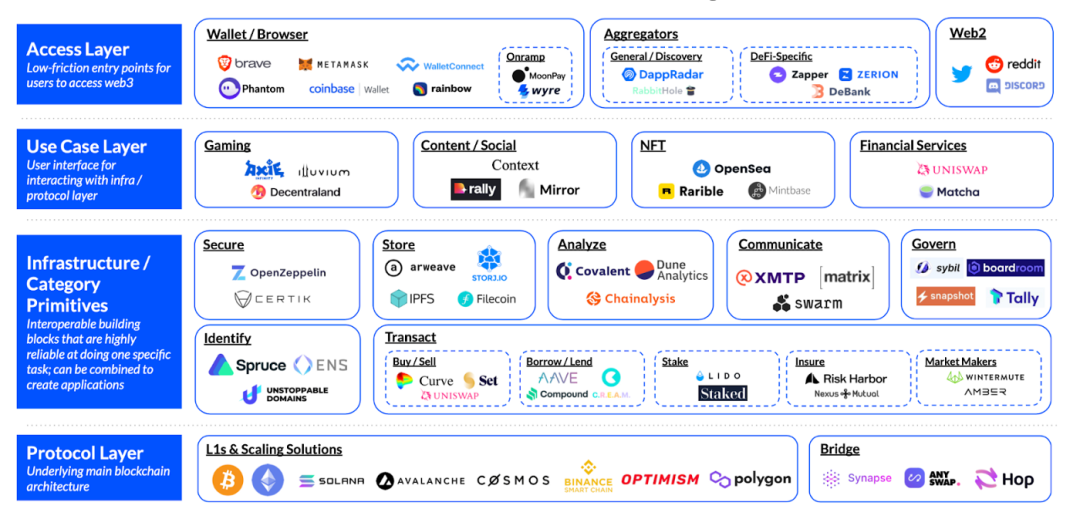
A Simple Guide to the Web3 Protocol Stack
To unlock the full value of a product, it must be powerful, reliable, and easy to use. Given the current technical limitations of blockchain compared to servers, high latency, low computational throughput, poor global accessibility³, and the risk of exploitation are all costs of decentralization. Moreover, even the most reputable Web3 products face risks from exploits, outages, and errors, with costs and frequencies of these issues being higher than in Web2. Vulnerabilities in any underlying infrastructure module of the protocol stack can impact its integrated partners. As applications continue to evolve, builders will intuitively find innovative solutions or make trade-offs to balance the spirit of decentralization with the need to create reliable functional products at scale.
Not everything needs to be decentralized. Not everything needs Web3. As we navigate through the noise of a bull market, where everything in the cryptocurrency space is infused with massive capital, two conclusions emerge for most people.
The fundamental questions are:
- How do builders assess which use cases of blockchain technology provide significant value relative to the next best alternative?
- How can teams launch functionally reliable products while maintaining the spirit of decentralization?
- To what extent do Web2 product building philosophies apply to Web3?
The Emergence of "SaaS" in Web3
As illustrated, when a new technology emerges, initial expectations are often exaggerated, and the ideal must temper the disillusionment before builders truly understand the nuances of how to best utilize it. The bull market injected massive liquidity into cryptocurrency, fueling builders' wildest dreams and expanding the boundaries of Web3, while the bear market revealed the use cases that truly create value and stifled others.
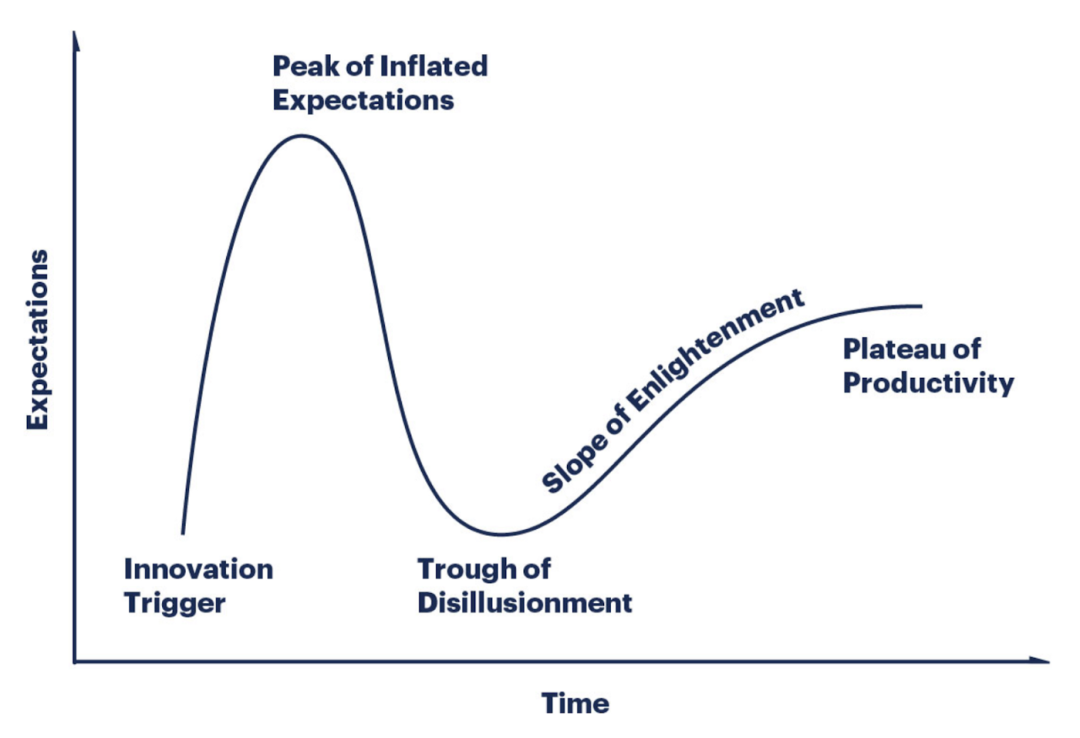
The inherent tokens of blockchain allow for permissionless, trustless value transfer, incentivizing stakeholders such as teams, investors, and project communities. Naturally, decentralized finance was one of the earliest use cases to gain significant attention, especially during the bull market of 2017. Additionally, blockchain and smart contracts provide a transparent, immutable database and computation layer. In the recent cycle, expectations, capital influx, and the influx of entrepreneurial talent reached historical highs, bringing use cases like decentralized storage, gamefi, decentralized identity, DAOs, scaling solutions, and tools into the spotlight.
In a recent article, "Where to use a blockchain in non-financial applications?", Vitalik discussed the value of blockchain, particularly in terms of interoperability and account management. Interoperability with other blockchain applications reduces complexity and costs for developers. "The main value provided on-chain is being in the same place as the things you are interacting with, which need a blockchain for other reasons." This characteristic gives way to human-proofing, distributing effective DeFi ecosystems, and open-source metrics driven by governance, certification, reputation/credit, measuring decentralization, and social graph algorithms. Furthermore, decentralized identity protocols can serve as an account management system that is transparent, immutable, publicly verifiable, and interoperable across ecosystems.
The diversity of products makes Web3 feel like the wild west version of the internet rather than a purely financial platform. In building non-definable end-user applications, blockchain computing allows builders to deploy and maintain backends independently of user demands with low operational overhead, overcoming expensive subscription models, while users pay less (though gas fees are still required)⁴. Some applications feel like traditional SaaS versions, with added benefits from a blockchain backend, while others are entirely new solutions tailored to Web3-specific scenarios⁵.
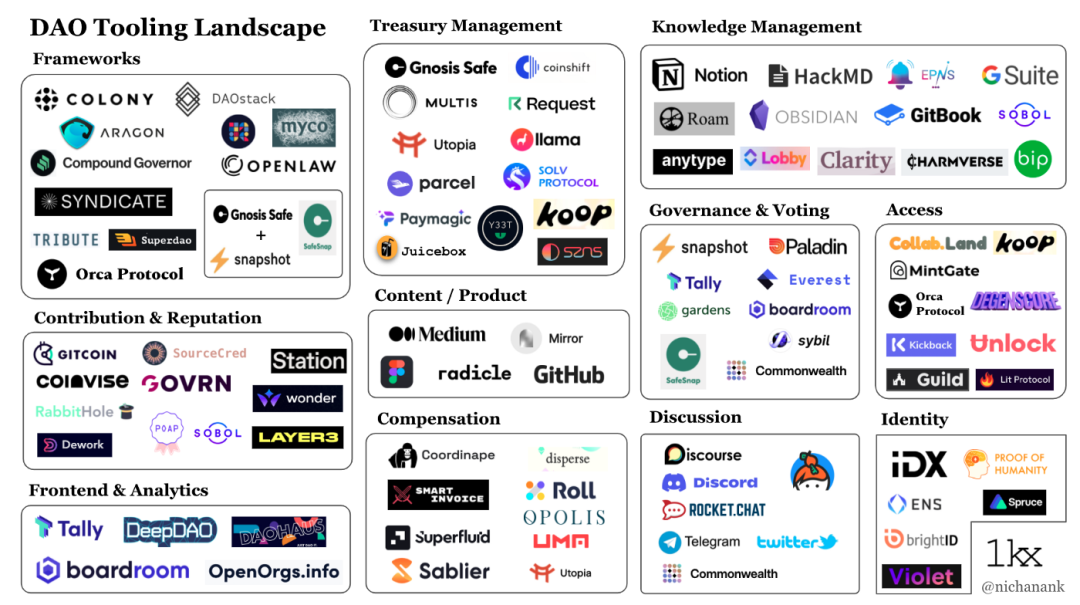
Organizational Lego: The Current State of DAO Tools
So, who are the users of these Web3 applications? Are they competing for Web2 users, or is Web3's expansion sufficient to sustain their growth? As runway tightens, we will see who are the speculative VC assets and who will grow to become the cornerstones of the Web3 space.
Incentive Structures, Business Models, and Scaling Operations
"Tokens unite network participants to work towards a common goal—promoting network growth and appreciating the token." (Chris Dixon, a16z, source). In centralized networks, companies are incentivized to compete with users and partners to accumulate value to maintain scaling growth. In Web3, attention is a scarce resource, and the participating community is an asset that will support projects by purchasing and holding their tokens and participating in governance.
The script for Web3 business models has yet to be fully written. For most projects, crypto degens, decentralization-maxis, and DAOs are not yet a large enough market to support sustainable cash flow. Some projects charge platform fees, while others optimize for growth while relying on investors to float until they launch tokens. Ultimately, regardless of how gradually decentralization occurs⁶, these are businesses that need to pay their teams and management fees. Relying on tokens issued by a project with negligible revenue as a business model seems contrary to traditional business fundamentals. As the regulatory environment becomes more favorable, we should see token models that more effectively capture value.
In terms of scaling, high user friction (wallets, gas fees, bridging, etc.) and lack of user education are bottlenecks for user onboarding in Web3. As these issues are addressed, projects are racing to acquire and retain new participants flooding into their communities with smooth, intuitive user experiences. On the other hand, as the next million participants join Web3, risks also increase, and the pressure on the product tech stack intensifies. Founders must be prepared to adapt, as tech stack failures are inevitable.
To ensure large-scale usability, the next generation of "Web2.5" decentralized applications is emerging. These applications leverage blockchain technology while often heavily relying on servers. For example, integrating private-public key wallets for login and encrypting user data may help solve many Web2 issues, such as endless usernames and passwords, and identity fraud. Moreover, case studies like OpenSea show that while relying on centralized servers carries risks, users simply do not care.
Case Study: EthSign
EthSign is building an interface between Web2 and Web3 by facilitating trustless agreements through connecting legally binding contracts and smart contracts. The following content is adapted from an interview with Jack Xu, co-founder and CTO of EthSign, and a blockchain lecturer at the University of Southern California.
What is EthSign? What does its product do?
EthSign Signatures is the first protocol signing platform built on Web3. We provide the same functionality, user experience, and legal validity as Web2.0 electronic signature platforms while leveraging the power of blockchain to enhance transparency and security.
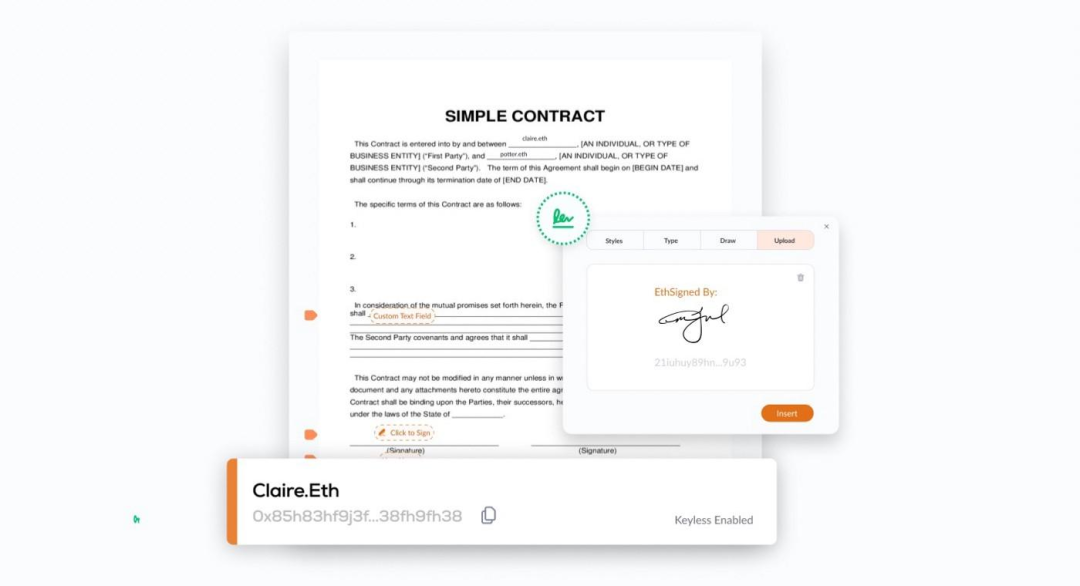
As for our secondary product, let's delve into the true meaning of agreements. Signing a contract indicates the signer's intent and agreement to uphold the terms of the agreement; signers trust each other to fulfill their obligations. In the event of a dispute, signers trust that legal jurisdiction will reach a fair resolution. Signing agreements on-chain with EthSign makes trustless agreements possible, with smart contract templates enforcing certain terms of the agreement.
Given the limitations of on-chain executable content, we are building products to serve specific scenarios. The first is TokenTable: a token management platform that enables Web3 projects to execute fundraising transactions and automatically allocate tokens to investors and team members.
What inspired the team to build end-user applications?
We saw an opportunity in the maturation of Web3 infrastructure, where low-cost decentralized computing based on Ethereum and emerging decentralized storage layers could enable the creation of more complex, user-facing applications. In 2019, our first hackathon iteration aimed to provide users with an application that could perform a common task with Web2-level user experience while protecting user identity and data.
What is the tech stack of EthSign Signatures?
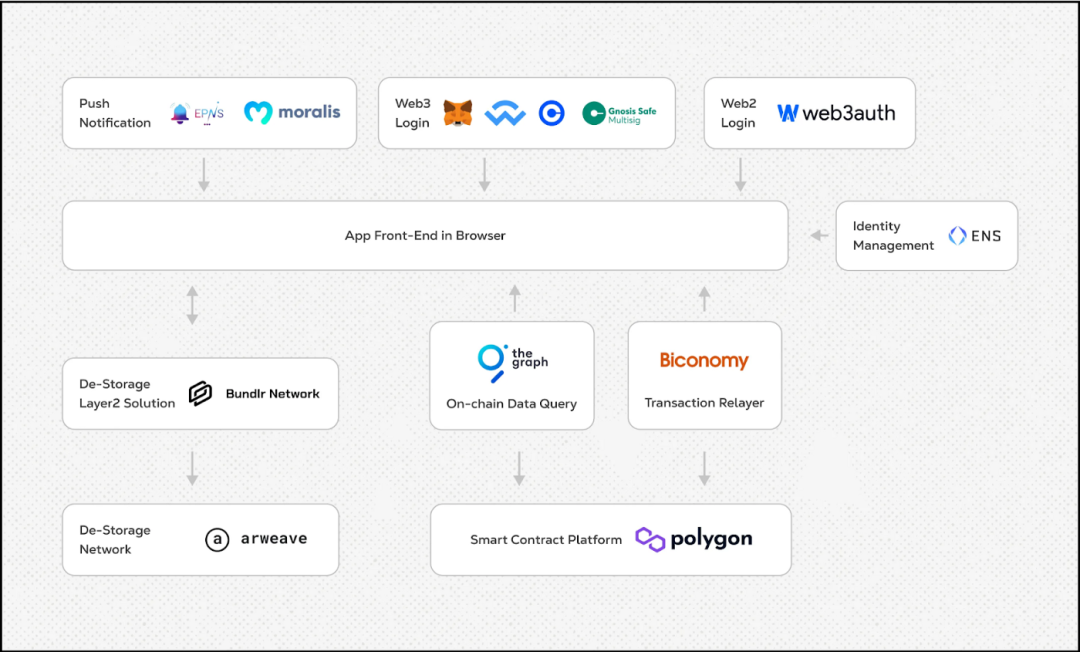
EthSign Signatures 4.0 Tech Stack
First, the dDApp runs its backend on a decentralized smart contract network rather than centralized servers. The frontend is the user interface that calls the backend based on user actions. Users log into our frontend through their wallets or social media; we use ENS to allow users to map their identity (.eth domain name) to addresses. Users can sign documents with their private keys to capture intent and consent, and the signatures and associated metadata are stored on-chain in Polygon and Arweave.
How does EthSign balance decentralization and functionality?
In previous versions, we strived for maximum decentralization. Sporadic failures and poor accessibility outside of North America and Europe posed significant challenges, forcing us to rethink our approach. A fully decentralized architecture is not yet ready for production. EthSign Signatures takes a pragmatic approach to decentralization, maximizing usability while retaining decentralization. This looks like statically hosting network content on AWS to improve accessibility while running logic and contract storage in a decentralized manner.
How does EthSign create a Web2-level user experience?
First, users can access EthSign without needing tokens for gas fees or using a crypto wallet. We integrated Web3 Auth and Biconomy. The former allows users to generate Web3 identities and log into the DApp using email, Google, Discord, and other social handles. Biconomy's gasless meta-transactions allow EthSign to create custom logic to sponsor gas fees for certain transactions; users do not need to hold ERC 20 tokens to pay gas fees when signing documents.
Second, the feature set of EthSign Signatures replicates a comprehensive Web2 electronic signature experience. We have an extended set of PDF annotations and text fields. Users can define the signing order among co-signers. Tooltips enhance usability. Emails can be linked to wallet addresses through the profile settings page. Push notifications are integrated via EPNS and Blockscan chat.
Third, we innovated blockchain-supported electronic signature user experience elements, such as keyless encryption, which enables local encryption and decryption from the user's private key. This means that protected documents can only be unlocked by the wallets of approved recipients, rather than by anyone holding the password. Additionally, all documents are permanently stored on-chain, and transactions can be publicly verified through our verification tools. We even tested an on-chain subscription model using NFTs, granting holders gasless transactions within a set timeframe.
Finally, implementing frontend details such as loading animations, tooltips, allowing auto-saving data caching, hover states, dropdown menus, and status pop-ups all contribute to creating a familiar user experience.
Technical Challenges
What relevant technical challenges are faced when developing blockchain applications?
Web3 is an emerging space; many scenarios lack robust documentation, and development requires creating novel methodologies, with human intuition not always being correct. In essence, developers write source code (using Solidity for Ethereum smart contracts), compile it into computer-readable code, deploy it, and then can run it on-chain. Some notable obstacles include:
- Managing smart contracts written in Solidity, which must link to a frontend written in JavaScript. Technically, the way Solidity signs strings differs from JavaScript, and the way data is stored is also different. For us, this causes headaches in terms of the differences when setting up signatures.
- Development in Solidity resembles a black box you cannot peek into. There is no way to pause your code execution to check variable values, making debugging more cumbersome compared to Web2. Development environments like Hardhat and testnets provide partial solutions to this problem.
- Solidity imposes limits on the number of variables a function can have; if the number exceeds the limit, the source code cannot compile. So developers must split some functions into multiple ones, which can sometimes be challenging to resolve.
Through ongoing successes and failures, Web3 builders are continuously refining their frameworks to assess how DApps can best leverage blockchain technology to create maximum value for their communities. As the decentralized internet evolves, user-facing DApps will carve out their place by granting people true ownership of their identities and data, as well as the applications they use.
The operation of these DApps relies on user participation, feedback, and contributions, so embark on exploring Web3! Don’t hesitate to break the status quo or challenge others; determining what is unfeasible is often the best way to find what is feasible!









